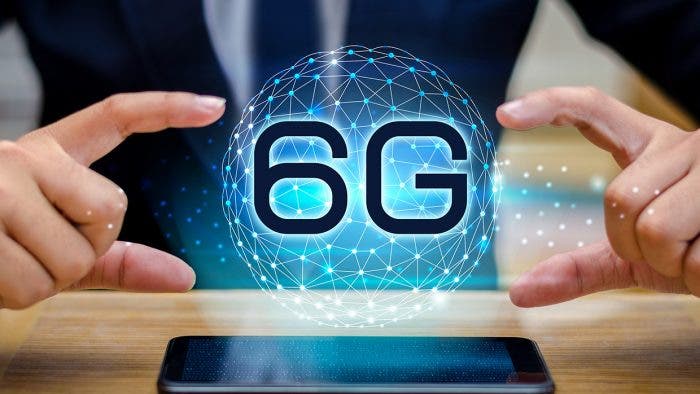The story of mobile communication is a saga of human ingenuity, relentless innovation, and a continuous quest for connection. It’s a journey that began with bulky devices delivering grainy calls and has culminated in smartphones that fit in our pockets, offering instant access to information, entertainment, and a global network of people. This article delves into the evolution of mobile communication, tracing the path from 1G to 5G and beyond, exploring the technological advancements, regulatory frameworks, and business ecosystems that fueled this remarkable transformation. We’ll also examine how mobile communication has fundamentally reshaped the way we live, work, and interact with the world around us.
From Crackly Calls to Connected Lives: The Evolution of Mobile Communication

1G: The Pioneering Era (1980s)
The first generation of mobile communication, or 1G, emerged in the early 1980s. It relied on analog technology, offering basic voice call functionality with limited capacity and poor audio quality. The bulky phones, often car-mounted due to their weight, were a novelty for early adopters – a symbol of a nascent mobile revolution.
Technology Advancements: Cellular network infrastructure was established, dividing geographical areas into “cells” served by dedicated radio towers. This allowed for handoffs between cells as users moved, enabling true mobile communication.
Regulatory Developments: Governments played a crucial role in allocating radio spectrum for cellular use, establishing the foundation for future mobile network development. Standards bodies like the International Telecommunication Union (ITU) began working on global standards for mobile communication.
Business Ecosystems: The early 1G era saw the birth of specialized mobile network operators (MNOs) who built and maintained the cellular infrastructure, offering mobile phone services to subscribers. These pioneers laid the groundwork for the competitive telecom landscape that would emerge later.
Impact on Lives: While limited in functionality, 1G offered a glimpse into the future of mobile connectivity. It enabled early forms of mobile communication, allowing people to make calls from various locations, albeit with significant limitations.
2G: The Digital Revolution (1990s)
The 1990s ushered in the era of 2G with the introduction of digital cellular technology. This era marked a significant leap forward, offering several advantages over its predecessor.
Technology Advancements: Digital signals replaced analog, leading to clearer voice calls, improved data transmission capabilities, and the introduction of SMS text messaging. This era also saw the rise of smaller and more portable mobile phones, paving the way for wider consumer adoption.
Regulatory Developments: Regulatory bodies focused on spectrum allocation for new digital technologies and facilitating competition among MNOs. This fostered innovation and helped drive down service costs, making mobile communication more accessible.
Business Ecosystems: The 2G era witnessed a boom in the mobile phone industry. New players entered the market, offering a wider variety of handsets and service plans. Value-added services (VAS) like SMS and basic internet access started emerging, laying the groundwork for the mobile data revolution.
Impact on Lives: 2G transformed mobile communication from a niche service into a mainstream phenomenon. SMS texting, a revolutionary innovation of this era, became a popular mode of communication, particularly among younger generations. With improved call quality and smaller phone form factors, 2G significantly impacted how people connected and interacted with each other.
3G: The Age of Mobile Data (2000s)
The 21st century saw the dawn of 3G, ushering in the era of mobile internet. This generation offered significantly faster data speeds compared to 2G, enabling a new wave of mobile applications and services.
Technology Advancements: 3G networks used packet-switching technology. Allowing for efficient data transmission and paving the way for mobile web browsing, email access, and early mobile app development. Video calling became a reality, further blurring the lines between mobile and fixed-line communication.
Regulatory Developments: Regulators focused on ensuring sufficient spectrum availability for 3G rollout and promoting competition among MNOs to drive further innovation and improve service quality.
Business Ecosystems: The 3G era saw the rise of mobile app stores. With Apple’s App Store and Google Play revolutionizing the way users accessed and interacted with mobile applications. New players emerged in the mobile content and services space, catering to the growing demand for data-driven experiences.
Impact on Lives: 3G fundamentally transformed mobile communication from voice-centric to data-driven. Mobile internet access became ubiquitous, enabling users to stay connected, access information on the go, and engage in new forms of mobile entertainment. Social media platforms gained immense popularity, fostering global communication and new forms of online communities.

4G: The Era of High-Speed Data (2010s)
The introduction of 4G networks in the 2010s significantly boosted data speeds and network capacity. This era witnessed Technology Advancements: 4G, also known as Long-Term Evolution (LTE), offered a quantum leap in data transfer speeds compared to 3G. This enabled features like high-definition video streaming, real-time gaming, and the proliferation of bandwidth-intensive applications like video conferencing and mobile cloud services.
Regulatory Developments: Regulators focused on promoting competition in spectrum allocation to facilitate wider 4G network deployment. Additionally, policies were drafted to encourage network neutrality, ensuring equal access to all internet content and services through mobile networks.
Business Ecosystems: The 4G era witnessed a surge in mobile data consumption, leading to innovative data plans and pricing models by MNOs. Mobile content providers ramped up their offerings with high-quality video and music streaming services. The rise of app-based businesses like ride-hailing and food delivery services was fueled by the increased adoption of smartphones and reliable mobile data access.
Impact on Lives: 4G transformed mobile communication into a true enabler of the digital lifestyle. High-speed data fueled the growth of the on-demand economy, allowing users to access services and products instantly from their smartphones. Social media became a powerful tool for communication, activism, and entertainment. Mobile banking and e-commerce platforms flourished, paving the way for a more cashless and digitally-driven society.
5G: The Dawn of a New Era (2020s and Beyond)
The latest chapter in the mobile communication saga is 5G. This next-generation technology promises even faster data speeds, ultra-low latency, and massive network capacity, opening doors for transformative applications across various sectors.
Technology Advancements: 5G utilizes new radio frequencies (mmWave) and advanced network architectures to provide significantly faster data rates and lower latency compared to 4G. This paves the way for innovations like connected cars, smart cities, virtual reality experiences, and the Internet of Things (IoT) at scale.
Regulatory Developments: Regulatory bodies are grappling with challenges like spectrum allocation for 5G and ensuring equitable access to the new technology. Policies are being drafted to address security concerns and promote infrastructure development for widespread 5G deployment.
Business Ecosystems: The 5G era is expected to spur new business models and disrupt existing industries. MNOs will need to invest heavily in infrastructure development to capitalize on 5G’s potential. New players focused on 5G-enabled services like cloud gaming and autonomous vehicles are likely to emerge.
Impact on Lives: 5G has the potential to revolutionize every aspect of our lives. Smart cities can leverage 5G for enhanced traffic management and public safety. Remote surgeries and advanced medical diagnostics could become a reality with ultra-low latency networks. The widespread adoption of IoT devices can transform homes and workplaces into interconnected ecosystems.
Beyond 5G: The Future of Mobile Communication
The future of mobile communication holds even more exciting possibilities. Researchers are exploring technologies beyond 5G, like 6G, which envisions even higher data speeds and ubiquitous network connectivity. These next-generation technologies have the potential to blur the lines between the physical and digital worlds, fostering even more profound changes in how we live, work, and interact with each other.

6G: Unveiling the Future of Mobile Communication
While the world is still grappling with the full potential of 5G, researchers and industry leaders are already peering into the future, envisioning the next generation of mobile communication – 6G. Though still in its nascent stages of development, 6G promises to be a revolutionary leap forward, offering unprecedented levels of speed, latency, and network capacity.
Unveiling the Vision: What is 6G?
6G, the sixth generation of wireless technology, is expected to be the successor to 5G. While a definitive standard for 6G is yet to be established, experts envision a network that surpasses current limitations, offering significant improvements in several key areas:
- Data Speeds: 6G networks are expected to deliver mind-boggling data speeds, potentially reaching terabits per second (Tbps). This is a hundred times faster than what 5G offers, enabling the seamless transfer of massive amounts of data in mere seconds.
- Ultra-low Latency: Latency, the time it takes for data to travel between two points, is expected to be significantly reduced in 6G networks. We’re talking about microsecond latencies, enabling real-time responsiveness for applications requiring near-instantaneous communication.
- Massive Network Capacity: 6G networks are expected to cater to a vastly increased number of connected devices. With the proliferation of the Internet of Things (IoT), 6G will need to support billions of devices simultaneously. Ensuring seamless connectivity for a truly interconnected world.
Technological Advancements: Powering the 6G Revolution
Several groundbreaking technologies are being explored to make the 6G vision a reality. Let’s explore some of the most promising advancements:
- Higher Frequency Spectrum: 6G is expected to utilize even higher frequency bands than 5G. Potentially venturing into the terahertz (THz) spectrum. These frequencies offer massive bandwidth but have shorter ranges and are more susceptible to signal blockage. Researchers are developing techniques to overcome these challenges and ensure reliable signal transmission.
- Network Slicing: This technology allows for the creation of virtual networks within a single physical network. Each slice can be customized to cater to specific needs, such as ultra-low latency for remote surgery or high bandwidth for augmented reality experiences.
- Artificial Intelligence (AI): AI is expected to play a crucial role in managing the complexity of 6G networks. AI-powered systems can optimize network performance, predict traffic patterns, and automate resource allocation, ensuring efficient network operation.
- Quantum Communication: While still in its early stages, quantum communication has the potential to revolutionize data security in 6G networks. This technology utilizes the principles of quantum mechanics to create unbreakable communication channels, offering unparalleled security for sensitive data transmission.
Unveiling the Potential: Applications for a Transformed World
With its unprecedented capabilities, 6G has the potential to transform numerous sectors and revolutionize the way we live, work, and interact with the world:
- The Rise of Immersive Experiences: 6G’s ultra-low latency will pave the way for widespread adoption of virtual reality (VR) and augmented reality (AR) technologies. Imagine exploring virtual worlds with seamless responsiveness or receiving real-time information overlaid on your physical environment – 6G can make it a reality.
- The Tactile Internet: With microsecond latencies, 6G could usher in the era of the “tactile internet,”. Enabling remote manipulation of objects with real-time haptic feedback. This has vast implications for telemedicine, allowing surgeons to perform complex procedures remotely with precise control.
- Smart Cities and Connected Infrastructure: 6G can empower smart cities by facilitating real-time data exchange between various infrastructure elements. Traffic management systems, environmental monitoring, and intelligent transportation networks can all benefit from the high bandwidth and low latency of 6G.
- The Industrial Revolution 4.0: 6G will play a critical role in Industry 4.0, enabling seamless communication between machines in factories and facilitating the development of truly intelligent manufacturing processes. Real-time data analytics and automated control systems will revolutionize industrial production.
- The Evolving Internet of Things (IoT): Billions of connected devices will become a reality with 6G’s massive network capacity. Imagine a world where everything, from your home appliances to your clothing, is connected and exchanging data – 6G can power this interconnected future.

Challenges and Considerations: The Road Ahead for 6G
So, while the potential of 6G is undeniable, several challenges need to be addressed before widespread adoption becomes a reality:
- Spectrum Availability: Utilizing higher frequency bands in 6G brings challenges. Terahertz (THz) waves have shorter ranges and are more susceptible to blockage by buildings and even foliage. Researchers are exploring solutions like beamforming and relay nodes to overcome these limitations and ensure reliable signal transmission. Additionally, regulatory bodies will need to define spectrum allocation strategies to accommodate the demands of 6G alongside existing wireless technologies.
- Energy Efficiency: Achieving faster data speeds and ultra-low latency often comes at the cost of increased energy consumption. Developing energy-efficient network architectures and hardware components will be crucial for sustainable 6G deployment. Advancements in battery technology will also be necessary to ensure extended battery life for mobile devices operating on 6G networks.
- Security and Privacy Concerns: With a vast number of connected devices and the potential for real-time data exchange, security and privacy become paramount in 6G. Robust encryption protocols and secure communication channels will need to be developed to safeguard user data and prevent cyberattacks. Additionally, ethical considerations regarding data privacy and potential surveillance issues need to be addressed as 6G networks become more ubiquitous.
- Infrastructure Development: Deploying a widespread 6G network will require significant investments in infrastructure development. New base stations and network equipment need to be designed and installed, potentially requiring significant upgrades to existing infrastructure. Collaboration between governments, MNOs, and technology companies will be vital to ensure the cost-effective and timely rollout of 6G networks.
- Standardization and Regulations: Establishing global standards for 6G technology is crucial to ensure interoperability between devices and networks from different vendors. Regulatory frameworks need to evolve to address the unique challenges and opportunities presented by 6G. Fostering innovation while ensuring fair competition and consumer protection.
The Road to a Connected Future:
Also, the journey towards 6G is a collaborative effort between researchers, industry leaders, policymakers, and the global community. By addressing the challenges and harnessing the transformative potential of this next-generation technology, we can pave the way for a more connected, intelligent, and prosperous future.
Conclusion: A Vision for a Transformed World
6G holds the promise of a future far beyond anything we can imagine today. It’s a future where information is accessed instantaneously, communication transcends physical boundaries. And the world around us becomes seamlessly integrated with technology. While the challenges are significant, the potential rewards are vast. As we embark on this journey towards a 6G-powered future, it’s crucial to ensure responsible development and equitable access to this transformative technology. By fostering collaboration and innovation, we can unlock the power of 6G to create a better, more connected world for all.
Conclusion: A Connected World
So, the evolution of mobile communication from bulky 1G devices to the ubiquitous smartphones of today is a testament to human ingenuity and technological prowess. Each generation of mobile technology has pushed the boundaries. Offering new ways to connect, access information, and engage with the world around us. Mobile communication has become an essential aspect of our lives. Transforming not just the way we communicate but also the way we conduct business, access services, and consume information. As we look towards the future, 5G and beyond promise to continue this transformative journey, shaping a world that is even more connected, intelligent, and full of possibilities.





